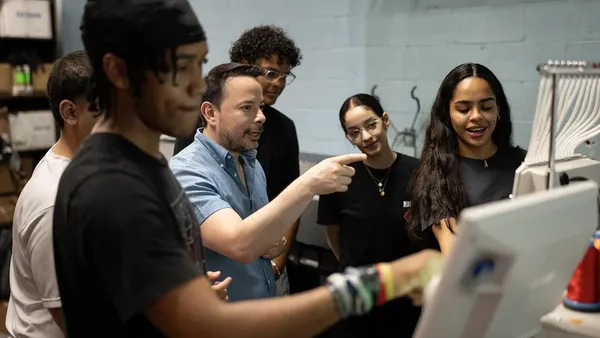Dive Brief:
- Christy Henson recently spun her math class into an "escape the classroom" activity — having children solve arithmetic problems as their clues. She gave her second-graders 36 minutes to find a way out of their classroom — and they escaped with seven minutes left, according to a story in The Brunswick News.
- To prepare, students in her classroom at Sterling Elementary School in Brunswick, GA, watched a video telling them a mad scientist would be trapping them in their classroom — and leaving them puzzles, including subtraction problems, they needed to solve to escape.
- While the activities took a lot of planning on Henson’s part, the class deciphered all the problems. She hopes they gained confidence by working as a group.
Dive Insight:
It’s the dream of every educator, to make learning moments seem like play. The dream, of course, is not always the reality. But incorporating fun experiences into classrooms is certainly one way to engage students — and there’s evidence that laughter, a byproduct of fun, can help children learn.
A 2017 study from the American Psychological Society finds that humor is an effective way to get students more involved in their work, to strengthen connections with each other and to even reduce stress. But researchers note that these mirthful moments need to connect to the work at hand, if teachers want to help students “…be better able to focus and attend to the information being presented.”
Fun and games then, for the sake of fun and games, may certainly be a way to release steam in the classroom. But administrators who want to see any investment in amusement pay off must weave activities into curriculum, whether that’s adopting e escape room activities or using gamification techniques— game mechanics — used by 60% of teachers.
Working and playing together, and having fun while learning. Administrators who meld these together can unlock the secret of education — where studying can feel effortless and children wake up excited to return to school.











